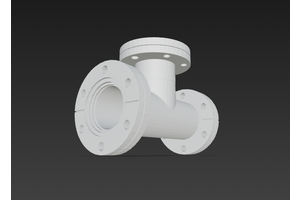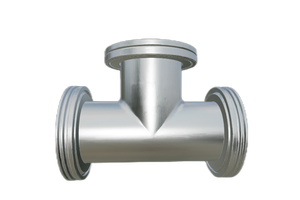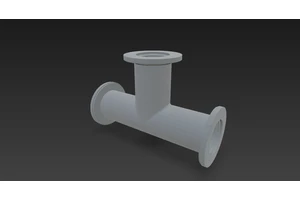-
Types of Dry Vacuum Pumps in Semiconductor Manufacturing: A Comparative Analysis
Dry vacuum pumps play a critical role in semiconductor manufacturing, where clean, oil-free environments are essential for high-precision processes. Over the past decade, advancements in mechanical design have led to the development of several dry vacuum pump types, each with unique advantages and limitations. This article explores the key categories of dry vacuum pumps used in semiconductor applications and provides guidance for selecting the most suitable design based on process requirements.1. IntroductionDry vacuum pumps are engineered to eliminate oil contamination, making them ideal for sensitive semiconductor processes. These pumps are broadly classified into two categories:multi-stage pumps(e.g., vane, claw, and combi-type) andsingle-stage pumps(e.g., screw-type).Multi-stage pumps rely on multiple vacuum chambers to compress gas incrementally, achieving high vacuum levels but requiring precise control of gaps and nitrogen dilution.Single-stage pumps, such as screw-type des
View -
Oil-Free Scroll Vacuum Pumps: Key Features and Industrial Applications
A clean vacuum environment has long been the gold standard for scientific research and industrial processes. Since the invention of vacuum technology, engineers and researchers have continuously sought methods to achieve contamination-free vacuum conditions. Today, a range of oil-free vacuum pumps exists, including condensation pumps, piston pumps, claw pumps, scroll pumps, and diaphragm pumps. Among these,oil-free scroll vacuum pumpsstand out for their unique advantages, making them a preferred choice in demanding applications.Key Features of Oil-Free Scroll Vacuum PumpsOil-Free and Frictionless OperationThe vacuum chamber operates without oil, ensuring non-contact operation between components. This eliminates mechanical wear and particulate contamination, providing an ultra-clean vacuum environment ideal for sensitive processes.High Pumping CapacityEquipped with dual scroll disks, these pumps offer double the pumping volume compared to single-stage models of the same d
View -
Key Considerations for Selecting a Vacuum Pump
When selecting a vacuum pump for industrial or scientific applications, it is critical to evaluate various technical, environmental, and economic factors. Below are essential guidelines to ensure optimal performance and compatibility with your specific requirements:1. Vibration and Environmental ImpactVibration Sensitivity: Assess whether the pump’s vibrations could interfere with the process or surrounding environment. If the application requires minimal vibration (e.g., precision manufacturing or laboratory settings), opt for oil-free or low-vibration pumps. Anti-vibration mounts or isolation systems can mitigate this issue in other cases.2. Gas Composition AnalysisGas Type and Properties: Identify the composition of the gas being extracted. Key factors include:Condensable Vapors: Gases like water vapor may require condensers to prevent clogging or damage.Particulate Matter: Dust or granular particles necessitate pre-filtration systems (e.g., dust collectors) to protect the pump.Corr
View -
Principles of Vacuum Pump Selection and Relevant Calculation Formulas
Before delving into the selection process for vacuum pumps, it's crucial to understand several fundamental concepts:Basic ConceptsVacuum Level: Represents the thinness of gas in a vacuum state, typically measured as vacuum level. The value read from a vacuum gauge is called vacuum level or gauge pressure. This indicates how much lower the system pressure is compared to atmospheric pressure (usually 101325 Pa). For instance, water ring vacuum pumps can achieve an ultimate absolute pressure of about 3300 Pa, whereas rotary vane pumps reach approximately 10 Pa.Ultimate Relative Pressure: Refers to the internal pressure difference relative to "atmospheric pressure". When using relative or gauge pressure, negative signs precede the values because the internal pressure is always lower than the external pressure.Ultimate Absolute Pressure: Compares the internal pressure with the theoretical vacuum (0 Pa). Due to technological limitations, achieving absolute vacuum is impossible; thus, the vac
View -
Differences Among Three Common Types of Vacuum Flanges (CF, KF, ISO)
Understanding the Structural and Functional Distinctions of CF, KF, and ISO Vacuum FlangesSection One: Conflat (CF) Flanges• Definition and Application of CF Flanges: Metal-sealed flanges used in ultra-high vacuum applications, capable of withstanding high-temperature baking.• Key Specifications: Nominal diameters include DN16, 40, 63, 100, 160, 200, 250; vacuum capability up to 10⁻¹² mbar.• Materials and Standards: Sealing materials such as Viton, PTFE, oxygen-free copper; typically made of 304 or 316 stainless steel; compliant with GB/T 6070-2007 and GB/T 6071-2003 standards.Section Two: ISO-KF Flanges• Structure and Functionality of ISO-KF: Quick-release flanges composed of KF flanges, O-rings, centering sleeves, and clamps, allowing tool-free assembly and disassembly.• Size Range and Performance: Available in nominal diameters DN 10, 16, 25, 40, 50; vacuum capability up to 10⁻⁸ mbar.• Materials and Compliance: Sealing materials include Viton, Buna, Silicone, EPDM, aluminum; typical
View -
Various Roles of Different Vacuum Pumps in Vacuum Systems
Understanding the Functions and Importance of Diverse Vacuum Pumps in Achieving Specific Vacuum LevelsSection One: Main Pumps in Vacuum Systems• Definition and Function of Main Pumps: Directly evacuating the vacuum system to achieve required vacuum levels for processes.• Selection Criteria: Identifying the appropriate main pump based on specific process requirements.Section Two: Roughing Pumps Explained• Introduction to Roughing Pumps: Reducing the pressure from atmospheric to a level suitable for another pumping system to take over.• Practical Applications: Utilizing roughing pumps in initial stages of vacuum creation.Section Three: Foreline Pumps and Their Role• Purpose of Foreline Pumps: Maintaining the front-stage pressure below its maximum permissible value for another pump.• Integration with Other Pumps: Ensuring efficient operation by supporting other vacuum pumps.Section Four: Holding Pumps for Stable Operation• Functionality of Holding Pumps: Supporting primary pumps or mainta
View -
Meaning and Characteristics of Vacuum
In the realm of vacuum science, vacuum refers to a gas state within a given space that is below one atmospheric pressure. This rarefied gas state is commonly referred to as a vacuum condition. Compared to the atmospheric conditions essential for human survival, this specific vacuum state has several fundamental characteristics:Pressure Differential: In a vacuum state, the gas pressure is lower than one atmospheric pressure. Consequently, all vacuum containers on the Earth's surface are subjected to atmospheric pressure, with the magnitude of this force determined by the pressure difference between the interior and exterior of the container. Given that one atmospheric pressure on the Earth's surface is approximately 10135 N/m², if the internal pressure of a container is very low, it will experience an external pressure close to one atmospheric pressure. The force per unit area at different pressures is illustrated in Table 1.Gas Molecular Density: Due to the thinness of gases in a vacuu
View -
What are some examples of ultimate vacuum in practical applications
The concept of ultimate vacuum is critical in various fields where extremely low-pressure environments are necessary. Here are several examples showcasing its practical applications:Scientific Research:Particle Physics Research: Facilities like the Large Hadron Collider (LHC) rely on ultra-high vacuum (UHV) conditions, achieving ultimate vacuums down to 10^-9 to 10^-10 Pascals. This ensures that particle beams can travel long distances with minimal collision against gas molecules.Material Science and Surface Analysis: Techniques such as Scanning Tunneling Microscopy (STM) and Atomic Force Microscopy (AFM) require an exceptionally clean environment free from air-borne contaminants, necessitating high or ultra-high vacuum conditions.Semiconductor Manufacturing:In the fabrication of semiconductor chips, processes including Chemical Vapor Deposition (CVD), Physical Vapor Deposition (PVD), and etching are conducted under high vacuum or UHV to minimize contamination and ensure precision. The
View -
What does ultimate vacuum mean?
The ultimate vacuum refers to the lowest pressure or the highest level of vacuum that a vacuum system can achieve. In other words, it is an indicator of the capability of a vacuum pump or other vacuum generation equipment, representing the best vacuum condition that the system can attain under ideal circumstances. Different vacuum pump technologies have different ranges of ultimate vacuum. For instance, the ultimate vacuum of mechanical pumps is typically between 10^-3 to 10^-4 Pascals, whereas high-performance pumps such as diffusion pumps and turbomolecular pumps can reach pressures down to 10^-7 Pascals or even lower. The ultimate vacuum is one of the critical parameters for evaluating the performance of a vacuum system, playing a significant role in both scientific research and industrial applications.
View -
Applications of Vacuum in Transport, Attraction, Lifting, and Vacuum Molding Equipment
Vacuum technology plays a pivotal role in various equipment designed for transport, attraction, lifting, and vacuum molding by leveraging the pressure differential between a vacuum and atmospheric pressure to perform work. This mechanical energy, characterized by uniform pressure distribution, can be applied seamlessly across any shape or plane. The versatility of these vacuum devices finds extensive application in industries ranging from food processing (such as fish, grain, flour, coal powder) to construction materials (cement, precast slabs), environmental cleanup (suctioning radioactive dust after atomic explosions), medical procedures (like fetal aspiration during abortions), and more. These applications are marked by their simplicity, ease of operation and maintenance, vibration-free performance, high efficiency, safety in handling delicate items, and environmentally friendly nature.Vacuum Transport, Attraction, and Lifting EquipmentIn sectors like agriculture, manufacturing, and
View
Wiki





